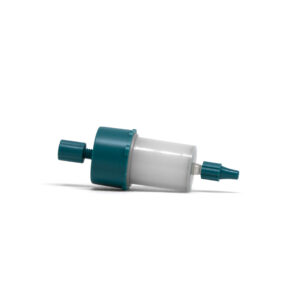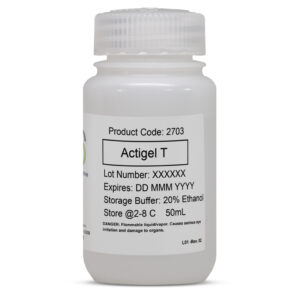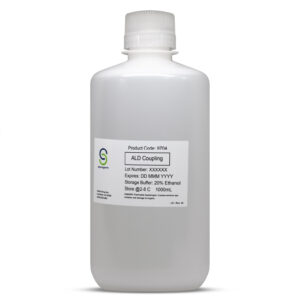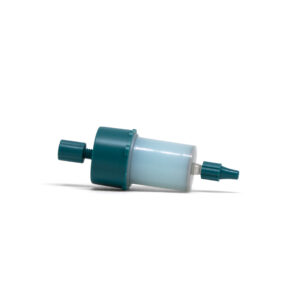Table 1. Resin Characteristics
| Bead Material
| Agarose |
| Bead Percentage
| 4% |
| Bead Size | 60-160 µm |
| Flow Rate1 | >20 mL/min (>680 cm/hr) @ 25oC |
| AT3 Binding
| >6 mg/mL |
| pH Stability2 | 2-14 |
| Storage Temperature | 2-8o C |
| Storage Buffer
| 20% Ethanol |
| Form | Slurry |
| Chemical Stability2 | Stable in all commonly used aqueous solutions and buffers. |
| Physical Stability2 | Negligible volume variation due to changes in pH or ionic strength. |
1Linear flow rate = volumetric flow rate (cm3/h)/column cross-sectional area (cm2)
2Data refer to the coupled product, provided that the ligand can withstand the pH or chemical environment. Please note the following: pH stability, long term refers to the pH interval where the medium is stable over a long period of time without adverse effects on its subsequent chromatographic performance. pH stability, short term refers to the pH interval for regeneration and cleaning procedures.
Instructions for Use
Glutathione Affinity Superflow 4 is a resin used for the purification of a variety of different Glutathione (GST) tagged proteins including: Glutathione S-transferases, Glutathione-dependent proteins, and recombinant derivates of Glutathione S-transferases.
Glutathione Affinity Superflow 4 purification requires some degree of method development for optimization. The protocol below is meant as an example for binding GST tagged proteins.
Protocol:
Reagents:
Wash buffer: PBS (1X)
Binding buffer PBS (150 mM NaCl, 3 mM KCl, 10 mM Na2HPO4, 2 mM KH2PO5), pH 7.35.
Elution buffer: 50mM Tris-HCl, 10mM reduced glutathione, pH = 8.0.
*** If necessary, the addition of dithiothreitol (DTT) to either the wash and/or elution buffer can reduce the risk of oxidation of free thiol (-SH) groups on GST. This dimerization of the GST-tagged proteins can result in precipitation and lower yields. It is recommended that 1-20 mM DTT be used. ***
Purification of GST Tagged Proteins
1. Pour the desired amount of Glutathione Affinity Superflow 4 in a Buchner funnel.
2. Wash resin with 10 bed volumes (BV) of wash buffer to remove all residual 20% ethanol.
3. Suction dry resin and remove to a designated container.
4. Add the cell lysate to the resin.
5. Rock/mix for 30-45 minutes at room temperature to ensure complete equilibration.
6. Remove sample and suction dry resin. Make sure to collect flow-through for further analysis.
7. To the resin, add 3 BV of wash buffer and mix for 3-5 minutes at room temperature.
8. Repeat steps 6-7 three additional times and collect fractions. This will result in the removal of any unbound material.
9. Elute the bound protein by adding elution buffer in a 1:1 ratio to Glutathione Affinity Superflow 4 resin.
10. Rock/mix for 30 minutes at room temperature to ensure complete equilibration.
11. Remove sample and suction dry resin. Make sure to collect flow-through for further analysis.
12. Repeat steps 9-11 three additional times and collect fractions.
13. Analyze each fraction for purified protein by measuring absorbance at A280.
14. Collect and pool fractions of purified protein together.
Method for Cleaning/Regeneration:
1. Wash the resin with 3-5 BV of a solution containing: 0.1M Tris-HCl 50mM Tris, 0.5M NaCl, pH 8.5.
2. Wash the resin with 3-5 BV of DI water.
3. Wash the resin with 3-5 BV of 0.1M Sodium Acetate, 1M NaCl, pH 4.5.
4. Wash the resin with 3-5 BV of DI water.
5. Wash the resin with 3-5 BV of wash buffer to re-equilibrate.
For technical service email info@sterogene.com or call (760) 929-0455
To Download Instructions for use:
INST 37009SF4 Glutathione Affinity Superflow 4




